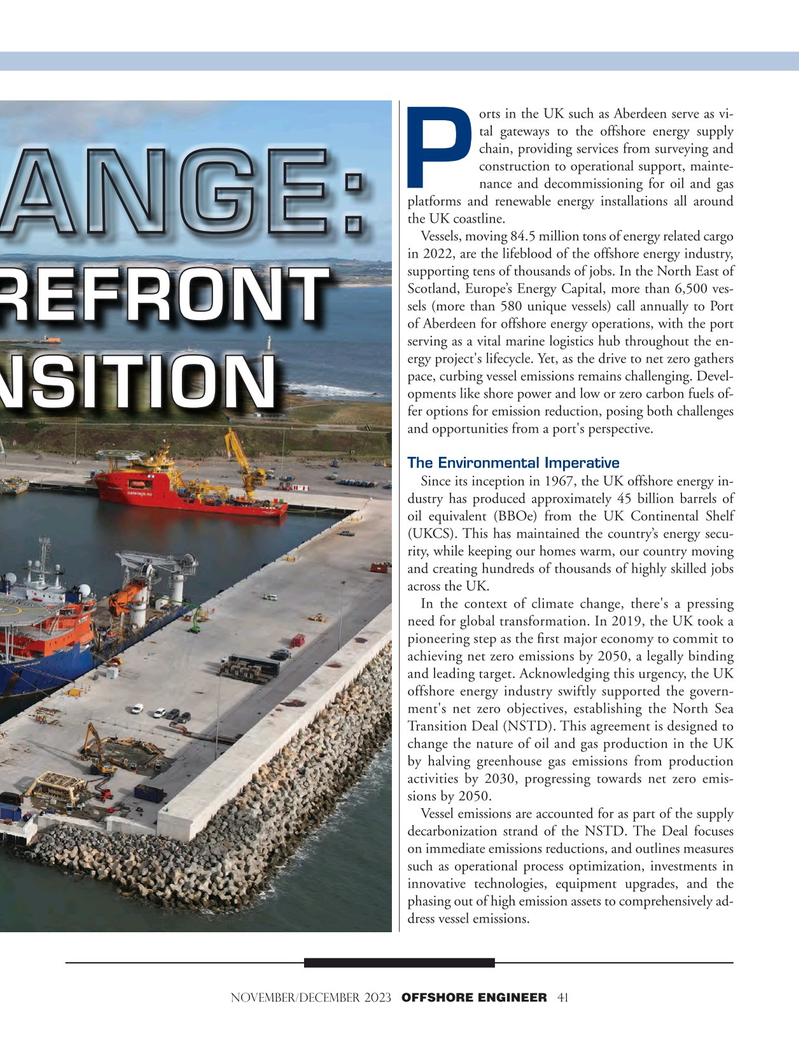
Page 41: of Offshore Engineer Magazine (Nov/Dec 2023)
Read this page in Pdf, Flash or Html5 edition of Nov/Dec 2023 Offshore Engineer Magazine
orts in the UK such as Aberdeen serve as vi- tal gateways to the offshore energy supply chain, providing services from surveying and construction to operational support, mainte-
P nance and decommissioning for oil and gas platforms and renewable energy installations all around the UK coastline.
Vessels, moving 84.5 million tons of energy related cargo in 2022, are the lifeblood of the offshore energy industry, supporting tens of thousands of jobs. In the North East of
Scotland, Europe’s Energy Capital, more than 6,500 ves- sels (more than 580 unique vessels) call annually to Port
PORTS AT THE FOREFRONT of Aberdeen for offshore energy operations, with the port serving as a vital marine logistics hub throughout the en- ergy project's lifecycle. Yet, as the drive to net zero gathers pace, curbing vessel emissions remains challenging. Devel- opments like shore power and low or zero carbon fuels of-
OF ENERGY TRANSITION fer options for emission reduction, posing both challenges and opportunities from a port's perspective.
The Environmental Imperative
Since its inception in 1967, the UK offshore energy in- dustry has produced approximately 45 billion barrels of oil equivalent (BBOe) from the UK Continental Shelf (UKCS). This has maintained the country’s energy secu- rity, while keeping our homes warm, our country moving and creating hundreds of thousands of highly skilled jobs across the UK.
In the context of climate change, there's a pressing need for global transformation. In 2019, the UK took a pioneering step as the frst major economy to commit to achieving net zero emissions by 2050, a legally binding and leading target. Acknowledging this urgency, the UK offshore energy industry swiftly supported the govern- ment's net zero objectives, establishing the North Sea
Transition Deal (NSTD). This agreement is designed to change the nature of oil and gas production in the UK by halving greenhouse gas emissions from production activities by 2030, progressing towards net zero emis- sions by 2050.
Vessel emissions are accounted for as part of the supply decarbonization strand of the NSTD. The Deal focuses on immediate emissions reductions, and outlines measures such as operational process optimization, investments in innovative technologies, equipment upgrades, and the phasing out of high emission assets to comprehensively ad- dress vessel emissions.
november/december 2023 OFFSHORE ENGINEER 41

 40
40

 42
42